In the realm of music, chord progressions lay the foundation for melody and harmony.
Their importance cannot be underscored; they breathe life into songs and bring forth the deepest emotions.
In particular, there is a unique category of chord progressions that evoke a sense of nostalgia, stirring our souls and awakening dormant feelings with their delicate resonance.
Examining these progressions reveals how music can be a powerful conduit of human experience and sentiment.
The following discussion delves into this fascinating territory.
With keen interest, we shall explore the inner workings of these musical phenomena.
Table of Contents
Nostalgic Chord Progressions
I-IV-V (1-4-5)
Unleashing powerful emotion with its inherent simplicity and elegance.
The I-IV-V (1-4-5) chord progression is one of the most popular in Western music, often found in genres ranging from blues and rock to pop and jazz. This progression carries a simple yet powerful, often nostalgic feel, creating a fundamental structure that resonates deeply with listeners and can evoke memories and emotions.
- Difficulty: Easy
- Example: G – C – D (Key of G major)
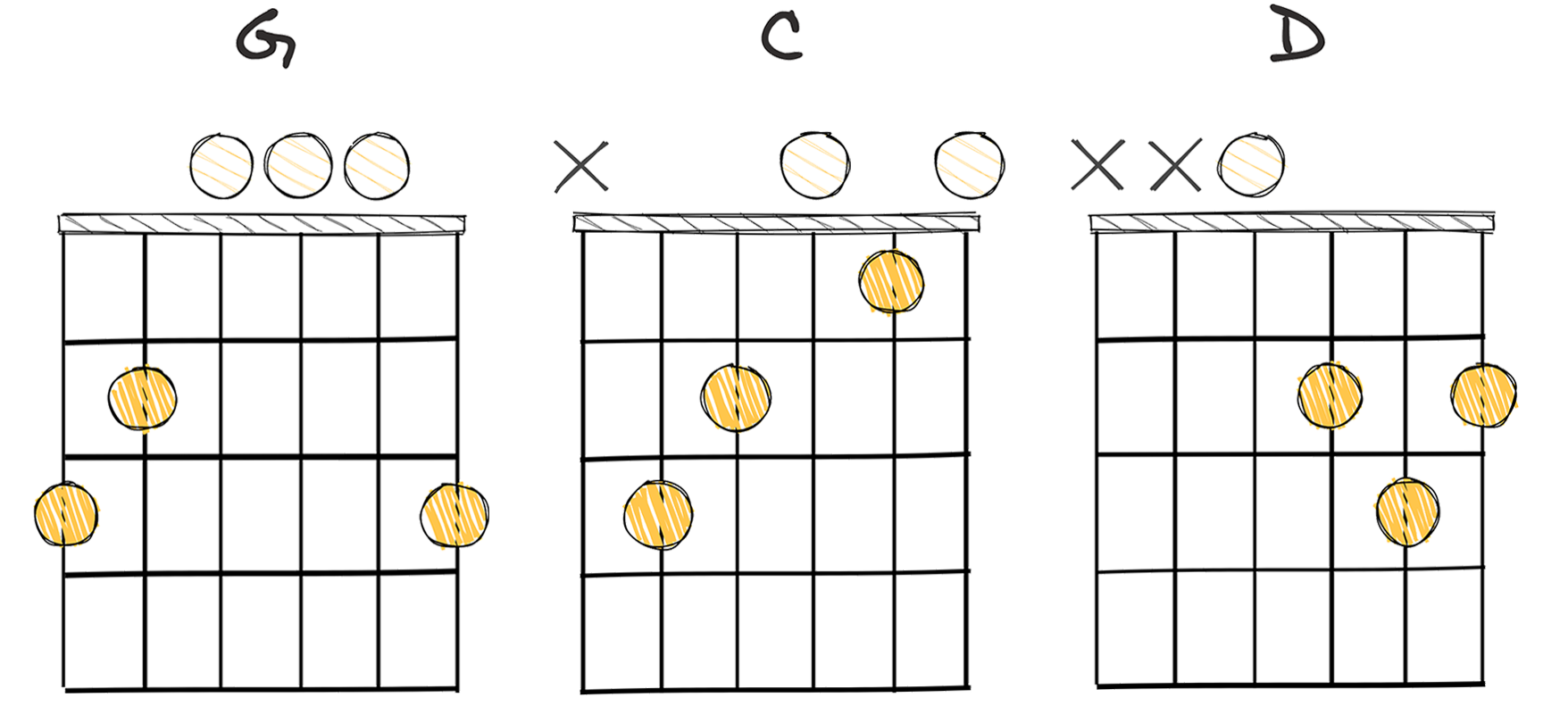
The I-IV-V (1-4-5) chord progression is one of the most enduring and universal sequences in all of music.
Its simplicity and timeless appeal have made it a cornerstone of western musical tradition, appearing in endless permutations across folk, rock, blues, and pop genres.
This ubiquitous chord progression harkens back to the roots of music theory and speaks to a shared, universal musical language that transcends cultural boundaries.
In the I-IV-V chord progression, the “I” stands for the tonic or root chord, “IV” represents the subdominant or fourth chord, and “V” signifies the dominant or fifth chord.
These are identified by Roman numerals that correspond to the steps of a seven-note scale.
The tonic, subdominant, and dominant chords are the three primary triads in a musical key.
This popular chord progression provides a simplistic beauty that often evokes a sense of nostalgia and longing in listeners, making it a potent storytelling tool in songwriting.
Not only does the I-IV-V chord progression stir the soul, it is also easy to play, making it a favorite among beginner and seasoned musicians alike.
The ease of this progression encourages musical exploration and innovation, even within its three-chord structure.
Understanding the ubiquitous nature of the I-IV-V progression can greatly enrich one’s appreciation for music, shedding light on the common patterns and structures that underpin so much of what we hear and play.
In many ways, the I-IV-V progression exemplifies the notion that music is a universal language, speaking to shared sentiments of humanity regardless of differences in language or culture.
ii-V-I (2-5-1)
Most iconic and soulful progression in jazz and popular music.
The ii-V-I (2-5-1) progression is a cornerstone of many genres, particularly jazz, due to its rich and anticipatory tonal resolution. Its cyclical movement creates a nostalgic aura that can evoke deep emotions, making it an incontrovertibly soul-stirring musical sequence.
- Difficulty: Easy
- Example: Dm – G – C (Key of C major)
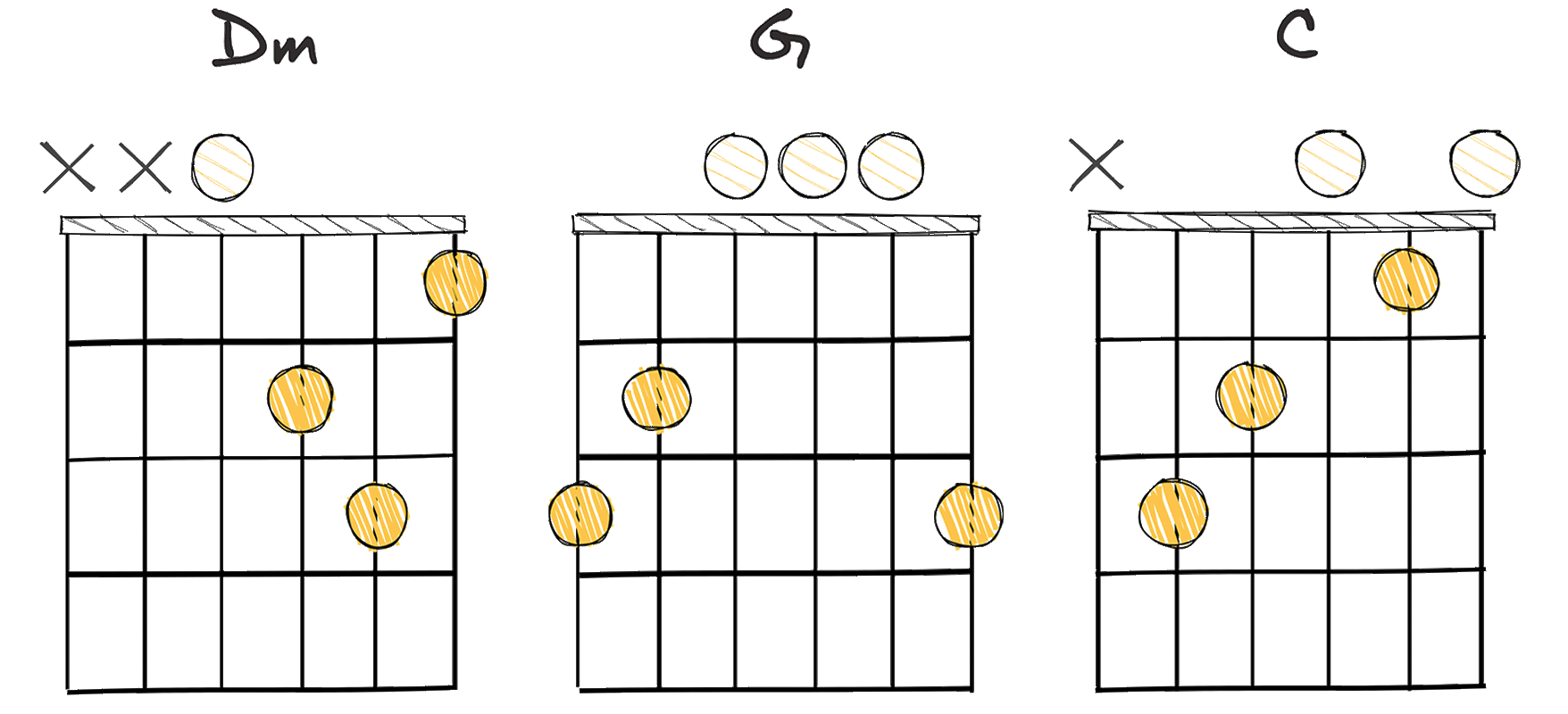
Soul-stirring chord progressions are essentially an arrangement of chords in a given sequence or pattern, where each evokes a particular feeling or emotion.
The ii-V-I progression (2-5-1) has a history steeped in jazz and pop music, signifying a nostalgic or sentimental feeling that resonates with many listeners.
This melody progression harks back to the rich traditions of jazz in America, where musicians experimented with different chord progressions to create a variety of emotive sounds.
Originating in the jazz era of the 1920s and 1930s, the 2-5-1 progression found its way into the mainstay of blues and gospel music as well.
The allure of this progression comes from the transition between minor, dominant, and major chords.
The switch produces a tension and resolution dynamic that stirs the soul and evokes a wave of nostalgia.
The 2-5-1 progression is considered an intermediate chord progression because of the skillset required to play these chords accurately and melodiously.
It demands a firm grasp of techniques such as voice leading and modulation and demands intermediate knowledge of theory, rhythm, and scales.
The chords – Dm, G, C – produce a stirringly immersive and soothing effect.
They manage to transport listeners into a state of exquisite nostalgia, something special about the 2-5-1 melody progression.
Understanding the chord construction and the emotional weight of each note helps musicians to freely experiment and create their versions of this iconic progression.
Even though classic, the 2-5-1 progression’s beauty lies in its timeless charm that leaves an indelible imprint on its listeners.
Its popularity has not faded over time.
Besides jazz, this progression also became a staple in pop and country music, thus showcasing its versatility and universal appeal.
Whether for a jazz-pop aficionado or an up-and-coming musician, the appeal of the 2-5-1 progression is truly timeless and emotionally profound.
It propels us into a state of beautiful nostalgia, a comforting reminder of the immensely transformational power of music.
Like the autumn leaves falling, the shifting chords in the 2-5-1 progression will continue to stir souls and evoke nostalgia.
vi-IV-I-V (6-4-1-5)
Echoes past memories with an undertone of comforting familiarity.
The vi-IV-I-V chord progression creates a melancholic and sentimental soundscape often associated with nostalgic pieces of music. This progression is frequently used in popular genres due to its universal appeal and ability to evoke strong emotional responses from the listener.
- Difficulty: Easy
- Example: Am – F – C – G (Key of C Major)
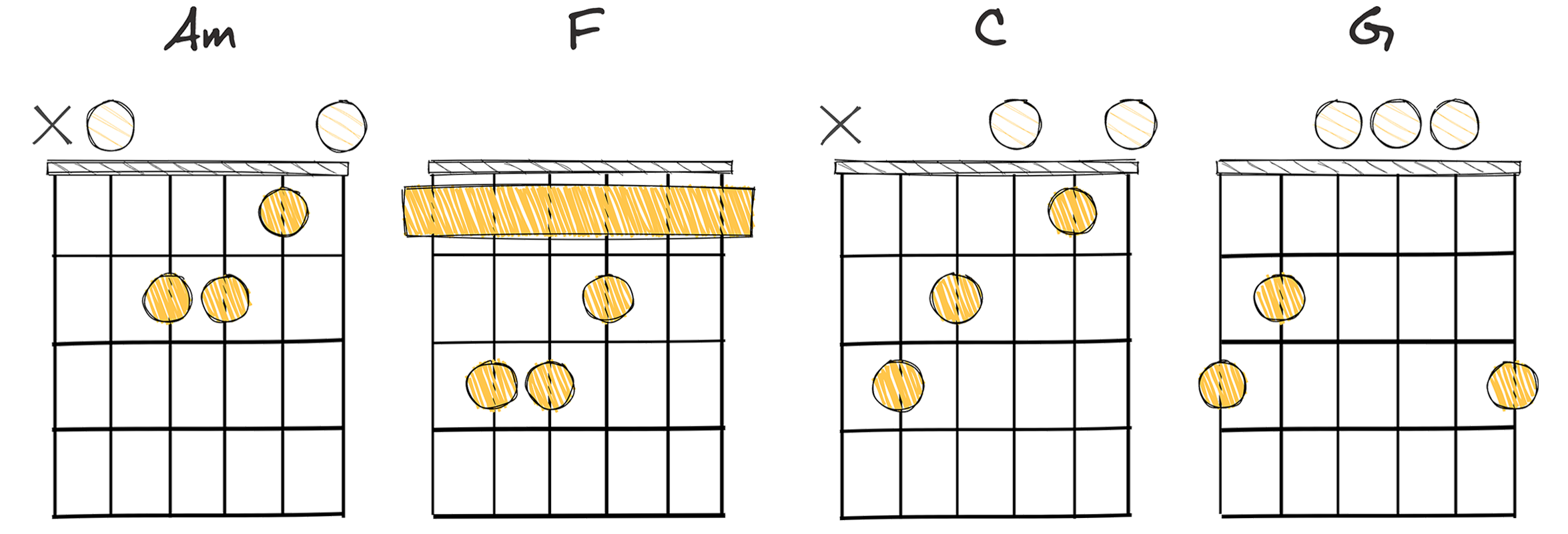
In the vast world of music theory, the vi-IV-I-V (6-4-1-5) chord progression, expressed in the key of C Major as A minor – F Major – C Major – G Major sequence, occupies a fascinating spot.
It’s a rather beloved progression by musicians across decades, regardless of their musical genre or era.
Historically, the vi-IV-I-V chord progression has been employed in countless popular songs and compositions.
The beauty of this progression is how it effortlessly brings about a nostalgic feeling, stirring up deep emotions within listeners.
The chord progression is easy to play, making it a frequently chosen foundation for songwriters and musicians, regardless of their proficiency level.
The melody’s emotional depth coupled with its simplicity resonate with both the musician and listener, thereby creating a universal appeal.
A noticeable characteristic of the progression is that it commences with a minor chord, weaving in a slight tinge of sadness or reflective emotion, only to resolve in the major I and V chords, offering a sense of triumphant resolution.
Despite this seemingly simple structure, the vi-IV-I-V progression can serve as a powerful storytelling tool in the hands of skilled musicians.
It has an almost hypnotic quality, cycling through its chords in a manner that can evoke feelings ranging from intense longing to youthful optimism, all within a few measures.
While many songs employ this progression throughout, others use it sparingly, introducing it for dramatic effect or as a reflective moment within a larger composition.
This chord progression’s popularity goes beyond just being easy to play, but its ability to tap deeply into raw and unfiltered human emotion.
From pop to rock and even classical music, the vi-IV-I-V progression’s widespread usage and adaptability tell a compelling story of its universal appeal and emotional potency.
I-IV-vii°-III (1-4-7-3)
A soul-stirring journey through harmonic nostalgia and poignant resolution.
This particular progression, I-IV-vii°-III, is a wonderful mix of harmonic interplay that creates an evocative, soul-stirring sound. The use of the seventh and third chords injects a heartfelt touch of nostalgia and longing to the progression, making it perfect for songs that aim to evoke strong emotional responses.
- Difficulty: Intermediate
- Example: D – G – Bdim – F# (Key of D major)
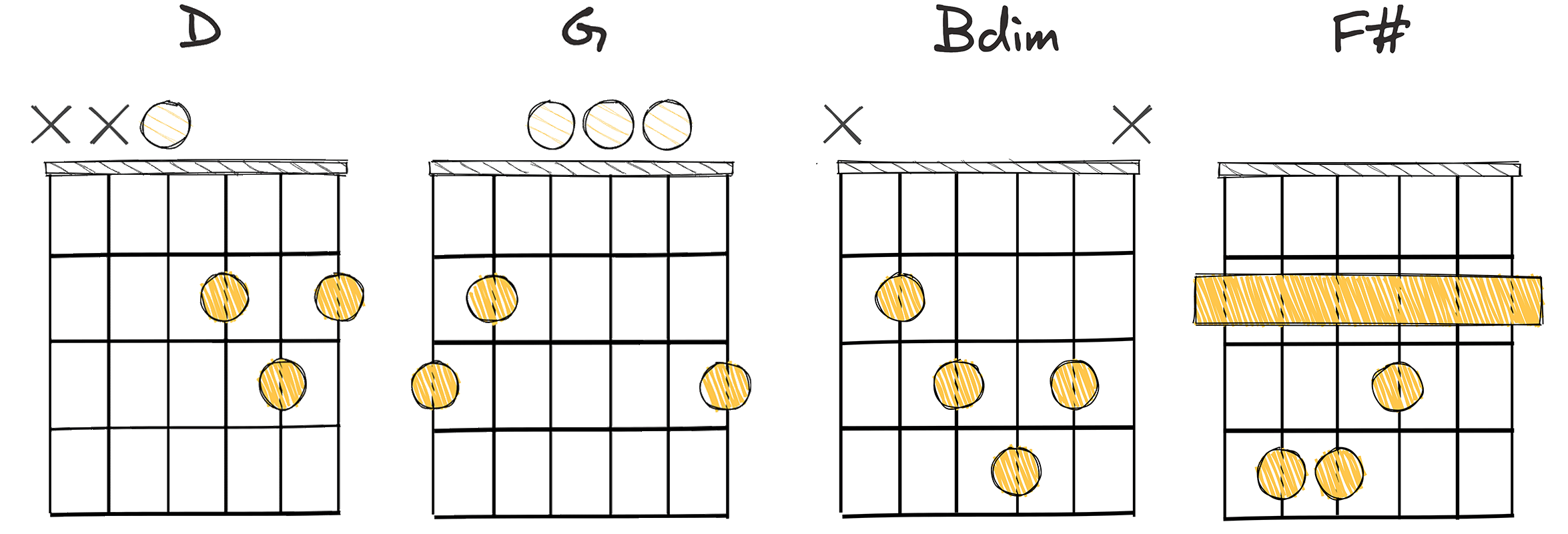
The I-IV-vii°-III chord progression (1-4-7-3), represented in the key of D major as D – G – Bdim – F#, is a captivating sequence that has been used throughout the history of music to evoke pensive nostalgia.
While it may be an intermediate progression to play, the complexity of its arrangement contributes to the richness of its audio palette.
This chord progression is innately unique due to the vii° (7) or diminished seventh chord, which has a dissonant sound that creates a sense of unresolved tension.
The vii° (Bdim in the key of D major), with its distinctive sound, is the pivotal chord around which the whole progression revolves, giving it its distinctive flavor.
Its effect is subtly powerful, forcing the listener’s emotions into unanticipated paths and setting the stage for the redemption provided by the final chord of the sequence.
Though the III chord (F# in the key of D major), is not as commonly used as the other chords in this progression, its placement at the end provides a surprising resolution that breaks away from traditional chord arrangements.
Our exploration would be incomplete without considering an iconic example of the I-IV-vii°-III chord progression in action.
The power to trigger intense feelings while remaining melodically pleasing is one of the progression’s most enchanting qualities, explaining its appeal across different music genres and periods.
Since music is grounded in emotion, this progression formulates a universal, emotional language that resounds with audiences, making it an indispensable tool for any songwriter or composer wishing to connect deeply with their listeners.
While the I-IV-vii°-III chord progression may not be as prevalent as others, its influence is indisputable, leaving an indelible mark on the music landscape.
It remains a favorite for creatives looking to convey complex emotions or construct a sophisticated musical narrative.
I-V-vi-IV (1-5-6-4)
This progression captivates with its timeless lure, evoking deep-rooted nostalgia.
The I-V-vi-IV chord progression is renowned for its innate ability to evoke deep feelings of nostalgia and emotion in listeners. A ubiquitous phenomenon in pop music, this sequence involves transitioning from the tonic to the dominant, then to the submediant and finally to the subdominant, creating a seamless harmonic flow which resonates with the human psyche on a profound level.
- Difficulty: Easy
- Example: C – G – Am – F (Key of C major)
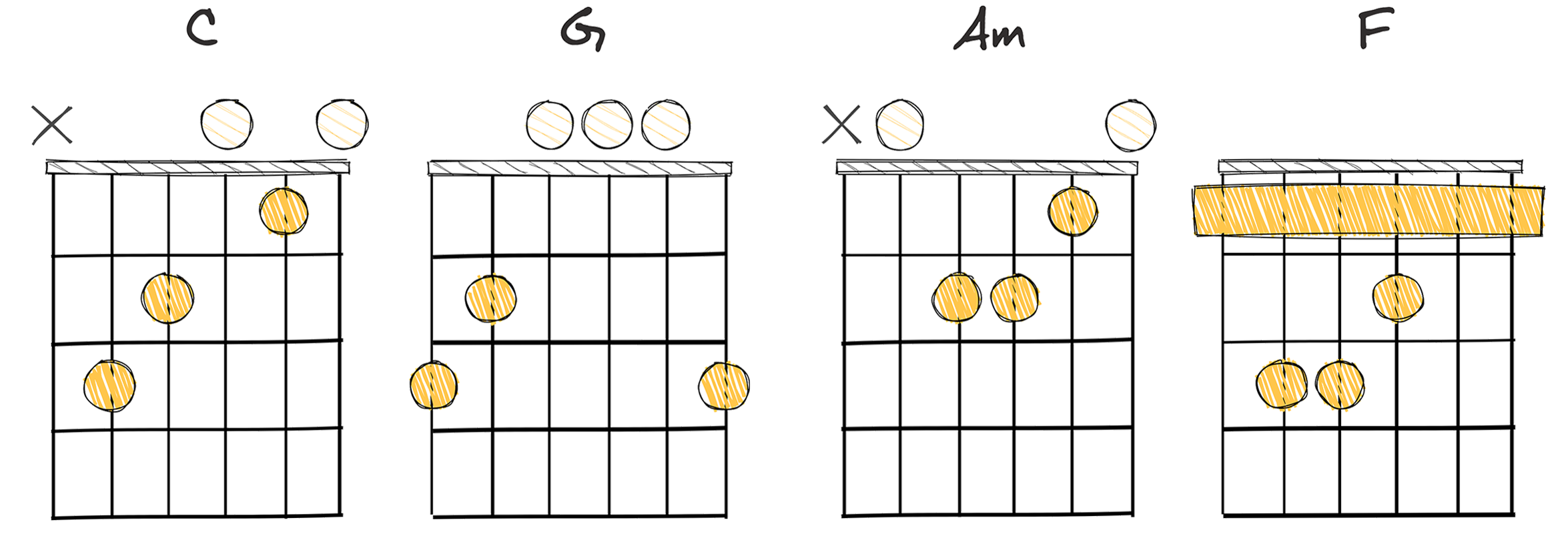
One of the most heart-tugging chord progressions that resonate deeply with listeners is the I-V-vi-IV.
This is a remarkably common progression in Western popular music.
Boasting a beautiful mix of major and minor chords, this progression produces a nostalgic feeling that is hard to ignore.
With its history dating back decades, the I-V-vi-IV progression has been at the forefront of many hit songs, contributing to their timeless and nostalgic quality.
The I-V-vi-IV progression is used widely across different music genres, from pop to rock to country, showcasing its versatility and emotional depth.
This versatility is a key factor in its popularity.
It strikes a delightful balance between accessibility and emotional complexity.
The transition from the major chords to the relative minor gives the music an emotional depth that strikes chords with listeners of all ages.
Aside from its emotional depth, this progression is also incredibly easy to play.
This accessibility makes it a clear favorite amongst musicians, novice and seasoned alike, as they can experiment with these chords to create beautiful, soul-stirring melodies.
Using this progression in your own music can bring a nostalgic depth to your compositions and allows you to tap into a long-standing tradition of popular music.
Whether you’re a beginner looking for an easy set of chords to start with or an advanced musician wanting to touch your audience’s hearts, this progression is a brilliant choice.
Creating music with the I-V-vi-IV progression, being such a captivating and emotional chord progression, gives endless possibilities while also providing a solid structure upon which to build your composition.
As a songwriter or performer, this chord progression allows you to play with both music and emotions, crafting pieces that will leave your listeners feeling deeply moved.
After all, music is about emotion, and the I-V-vi-IV progression has an innate ability to evoke profound feelings in both the listener and the musician.
By understanding how this chord progression works and seeing its use in popular music, you can tap into its potential and weave your musical magic.
IV-I-IV-V (4-1-4-5)
A timeless progression evoking powerful emotions of longing and reminiscence.
The IV-I-IV-V chord progression is a classic sequence used frequently in pop, rock, and country genres due to its versatile and pleasing sound. The progression creates an inherent sense of nostalgia, stirring emotions within the listener, while maintaining a strong, resolute continuity in its movement.
- Difficulty: Easy
- Example: D – G – D – A (Key of D major)
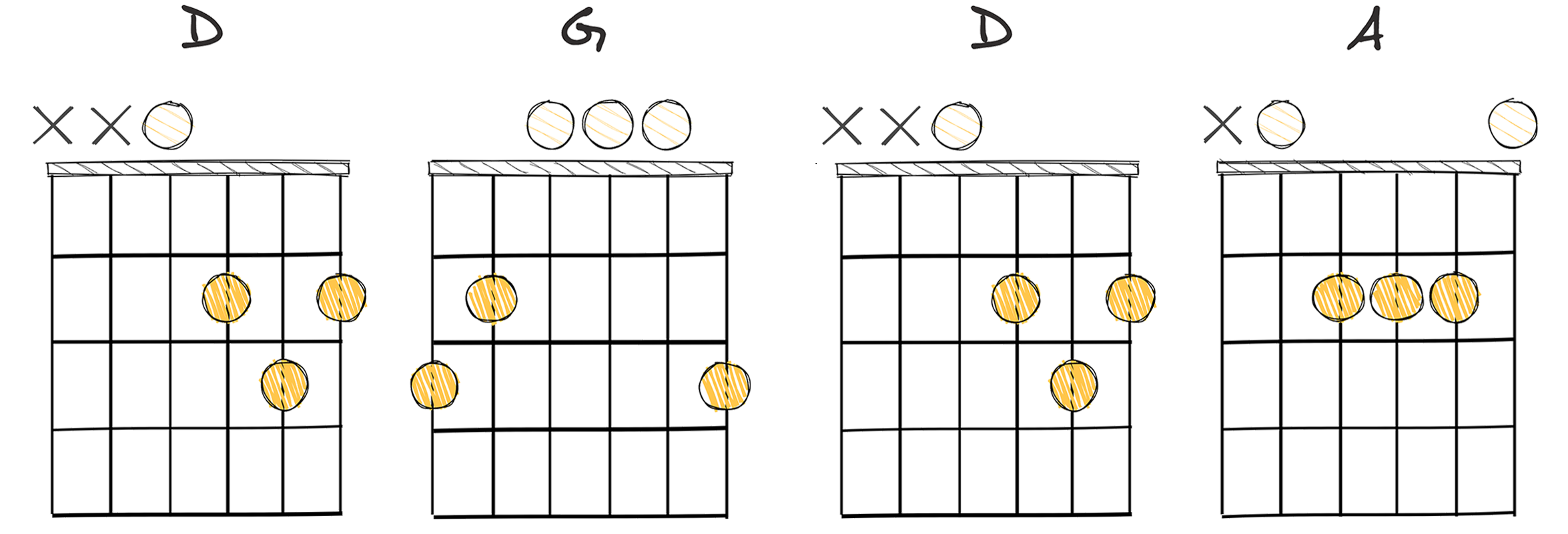
The chord progression of IV-I-IV-V is a compelling one that encapsulates the inherent nostalgia found in music.
By utilising this chord progression, songwriters can evoke a strong sense of longing and emotion, and tap into the listener’s deep-rooted sentiments.
The unique composition of this progression provides an easy and intuitive platform for composing soul-stirring melodies.
In essence, the IV-I-IV-V progression is an evolution of the classic I-IV-V progression, with a slight twist.
The inclusion of the ‘IV’ chord before the ‘I’ (home) chord contributes to a momentary disconnect, creating a powerful tension that perfectly complements the ultimate resolution found in the ‘V’ chord.
This unique tension and resolution mechanism has enabled the IV-I-IV-V progression to resonate with listeners across generations.
It invokes a sense of melancholic nostalgia and longing, making it a popular choice for songwriters who wish to create mood-driven compositions.
Historically, this chord progression has been a cornerstone in the world of rock and roll; indeed, it defined the genre’s sound during its golden age.
Taking a step back in the timeline of music, one would find artists who utilised the IV-I-IV-V progression extensively – artists who played a significant role in the formation of contemporary music.
These were musicians who dared to tread off the beaten path, to use a non-standard progression to create music that challenged norms and touched hearts.
It demonstrates the progression’s potential to serve as a canvas against which any poignant storyline can be painted.
For those who wish to understand this chord progression in its purest form, the chords D – G – D – A (key of D major) provide a clear example.
It follows the formula of the IV-I-IV-V progression and showcases the exclusive harmonic combination at its core.
With this sound arrangement, listeners can truly grasp the essence of the progression, unveiling the underlying melancholy and nostalgic allure.
Discussing the IV-I-IV-V chord progression in relation to contemporary music culture, it’s interesting to note its overall impact and the undertones it brings about.
It might seem simplistic at first glance, but the emotional typography it paints is profound, prompting a deeper understanding of music theory in one’s quest to compose soul-stirringly beautiful rock music or even other genres.
As we examine this progression beyond its historical and theoretical context, we come to appreciate its significance as a staple in music composition.
This indispensable tool in a musician’s arsenal, a catalyst that sparks creativity in transforming raw feelings into melodious renditions.
In sum, the IV-I-IV-V chord progression is much more than a series of notes—it is a narrative device, a vehicle for emotion, and a bridge that connects the songwriter to the listener.
Through the use of this nostalgic progression, musicians can craft timeless pieces that stir the soul and continue to resonate for generations to come.
vi-ii-V-I (6-2-5-1)
Classic progression evoking feelings of deep longing and wistful yearning.
The vi-ii-V-I chord progression exudes a profound sense of nostalgia, evoking emotions of longing and reminiscence. This sequence is a blend of minor and major chords that weaves a beautiful soundscape, often used to stir listeners’ souls and evoke a sense of yearning or looking back fondly.
- Difficulty: Intermediate
- Example: Am – Dm – G – C (Key of C major)
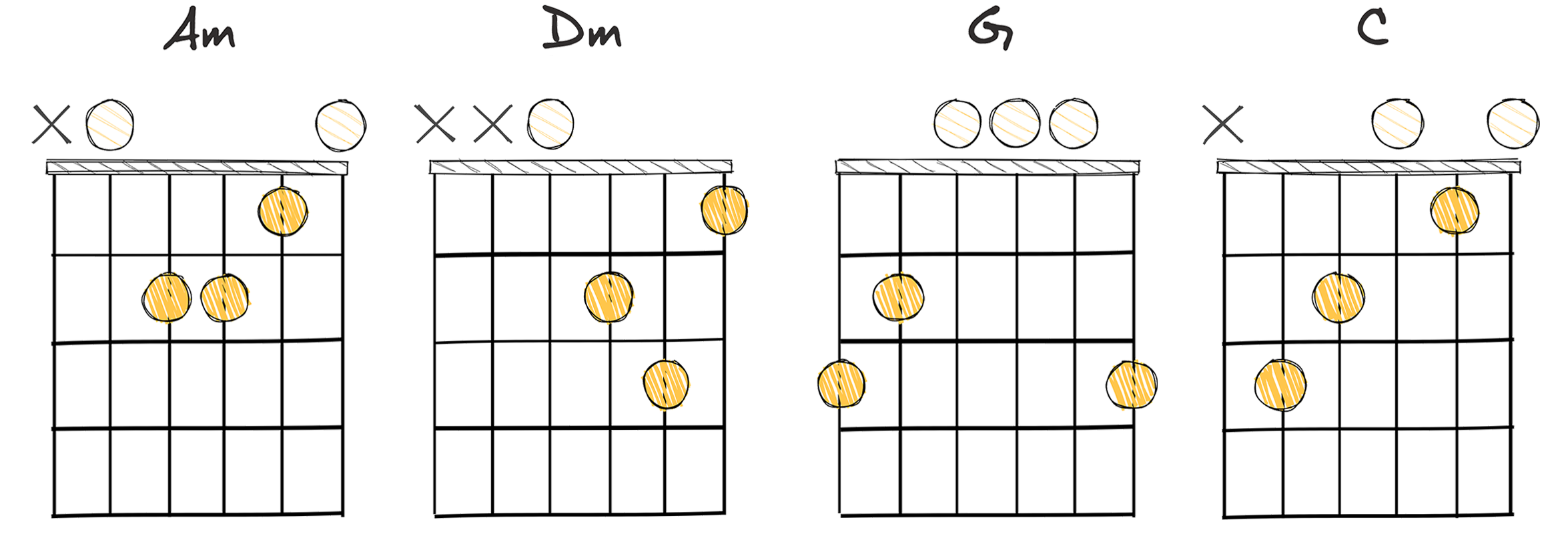
The vi-ii-V-I (6-2-5-1) chord progression, offers a distinctive, haunting yet beautiful harmonic sequence that can stir the soul and evoke a powerful sense of nostalgia.
This progression, often found within the world of jazz and popular songs, has been used by musicians and composers to give their works depth and emotional resonance.
Despite its apparent simplicity, the 6-2-5-1 progression can be quite challenging for intermediate players, requiring a solid understanding of harmony, key signatures and improvisational skills.
When applied effectively, this progression can generate a cascading effect, each chord resolving naturally into the next, creating a sense of continuous forward motion.
In the key of C major, for instance, the progression would be made up of the chords A minor (vi) – D minor (ii) – G major (V) – C major (I).
While vi-ii-V-I (6-2-5-1) is most commonly associated with jazz, its scope reaches far beyond, found in everything from classical music to rock and pop.
It’s long been a favourite tool of songwriter, used not just for its inherent musical qualities, but also for its ability to invoke an emotional response.
This connection to emotions, especially those nostalgia-laden ones, is likely why this progression resonates so deeply with listeners.
The vi-ii-V-I (6-2-5-1) chord progression offers a space for musicians to tap into the rich wellspring of shared human experience.
It’s the meeting point of music theory, technical proficiency, and emotion, creating timeless expressions of the human condition.
Considering its evocative nature, the vi-ii-V-I (6-2-5-1) progression is likely to continue to fascinate musicians and listeners alike, reverberating through time with its uniquely nostalgic allure.
I-ii-V-I (1-2-5-1)
Classic progression evoking deep nostalgia with its warm, resonant transitions.
The I-ii-V-I progression is a classic and simple sequence that is often associated with a sense of nostalgia and emotional depth in music. It starts with the home chord, moves up to a minor chord, leaps to a major chord, and then resolves back to the home chord, creating a circular, satisfying feeling that harkens back to the roots of tonal music.
- Difficulty: Easy
- Example: C – Dm – G – C (Key of C major)
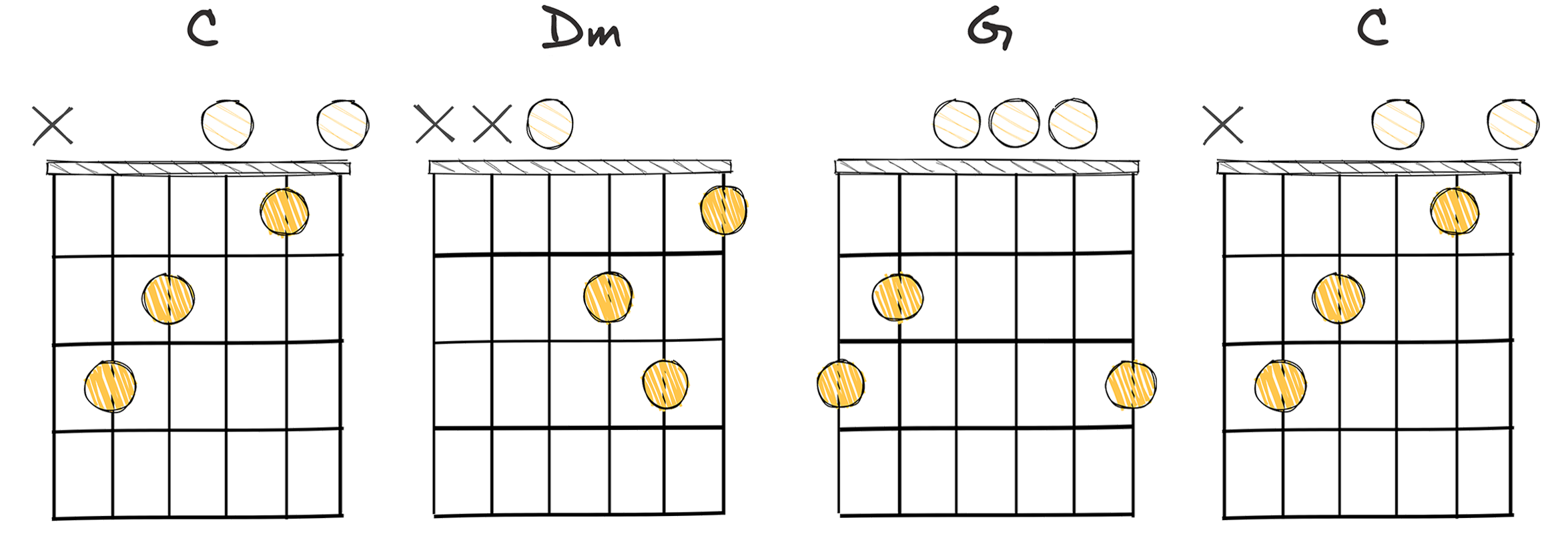
Delving into the realm of the I-ii-V-I chord progression, one can’t help but appreciate its innate ability to evoke a deeply rooted sense of nostalgia and familiarity.
This chord sequence, also known as the 1-2-5-1 progression, has been a mainstay within a variety of musical genres over the years, from the organically flowing arrangements of jazz to the more structured compositions of pop and rock.
It’s a truly classic progression that has enamored listeners and musicians alike, partly due to its accessibility and ease of play, particularly in the key of C major.
If we take this progression in the key of C major, for instance, the chords would translate to: C, Dm, G, and C.
Countless songs have harnessed the magic of the I-ii-V-I progression to craft memorable melodies and timeless classics.
One of the reasons for its wide use is its structural simplicity, which allows musicians to easily construct and layer their melodies.
And yet, despite its simplicity, it offers a rich tapestry of harmonic possibilities, making it an extremely versatile progression.
Indeed, its universal appeal lies in its perfect balance of simplicity and complexity, familiarity and novelty.
And yet, while it is simple and easy to play, mastering the I-ii-V-I progression requires a deep understanding of musical theory, chord relationships, and the subtle nuances that paint emotions and colors onto a musical canvas.
Under the gentle hands of adept musicians, it takes on a life of its own, breathing new dimensions into the music and stirring the souls of listeners.
However, while it is undeniably popular and widely used, there’s always a risk of overuse or misuse of the I-ii-V-I chord progression.
Yet, this doesn’t detract from its timeless charm and widespread appeal.
The I-ii-V-I chord progression’s rich legacy, its profound impact on musical compositions across different genres, and the soul-stirring nostalgia it evokes, serves as a testament to its enduring relevance in the sonic universe of music.
I-vi-IV-V (1-6-4-5)
A timeless journey through chords, evoking deep nostalgia and emotion.
The I-vi-IV-V (1-6-4-5) progression is a classic sequence of chords that’s known for evoking a nostalgic, emotionally stirring effect in listeners. This foundational staple in pop, rock, and blues is often associated with songs from the ’50s and ’60s, simply due to its timeless charm and the prevailing sense of relatability and comfort it provides.
- Difficulty: Easy
- Example: G – Em – C – D (Key of G major)
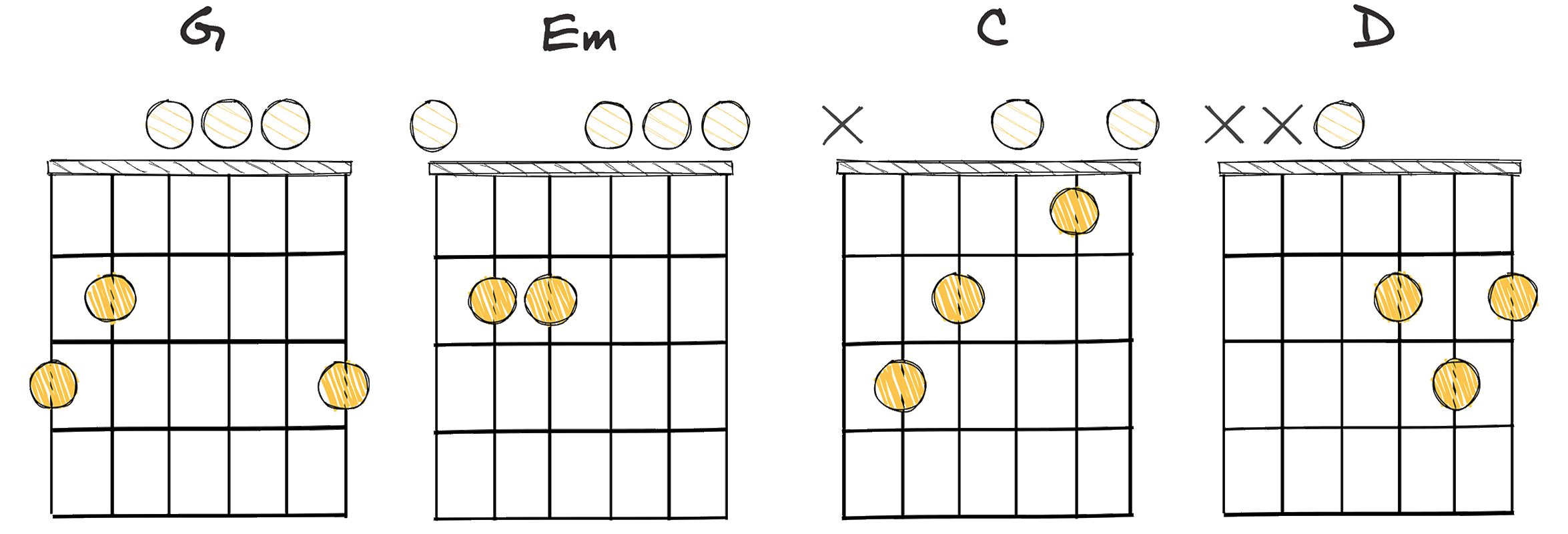
Music has a unique power to transport us back in time, activating feelings of nostalgia and wistfulness.
The I-vi-IV-V chord progression, also known as the 1-6-4-5 chord progression, is one such musical pattern that has this evocative quality.
The history of this chord progression dates back to the early days of popular music and it has been a staple in songwriting across the generations.
The I-vi-IV-V chord progression is also easy to play, making it an attractive choice for both new and seasoned musicians.
Indeed, part of the reason why this chord progression is so prevalent in music history is due to its simplicity and versatility.
Interestingly, the I-vi-IV-V progression follows a pattern that can be easily transposed to different keys, thereby expanding its usage across a wide array of songs and genres.
Moreover, even though it is a simple progression, it offers a wealth of harmonic possibilities, and it has been used to great effect in countless songs.
An example of chords in this progression are G – Em – C – D, in the key of G major.
This progression is commonly associated with feel-good, upbeat songs, as well as ballads that touch on emotions of longing and reminiscence.
The I-vi-IV-V chord progression exemplifies how such simple musical structures can leave a profound and lasting impact.
It serves as a testament to the power of music in evoking deep-seated nostalgia.
ii-V-vi (2-5-6)
Unraveling emotional journeys with a melancholic twist in every strum.
The ii-V-vi (2-5-6) chord progression often carries a strong undercurrent of sentimentality and nostalgia, encapsulating a wistful longing for the past. Its gentle transition between chords evokes a soothing, dreamy atmosphere that stirs deep emotions within the listener, creating a sense of poignant nostalgia that resonates on a universal level.
- Difficulty: Intermediate
- Example: Em – A – Bm (Key of D major)
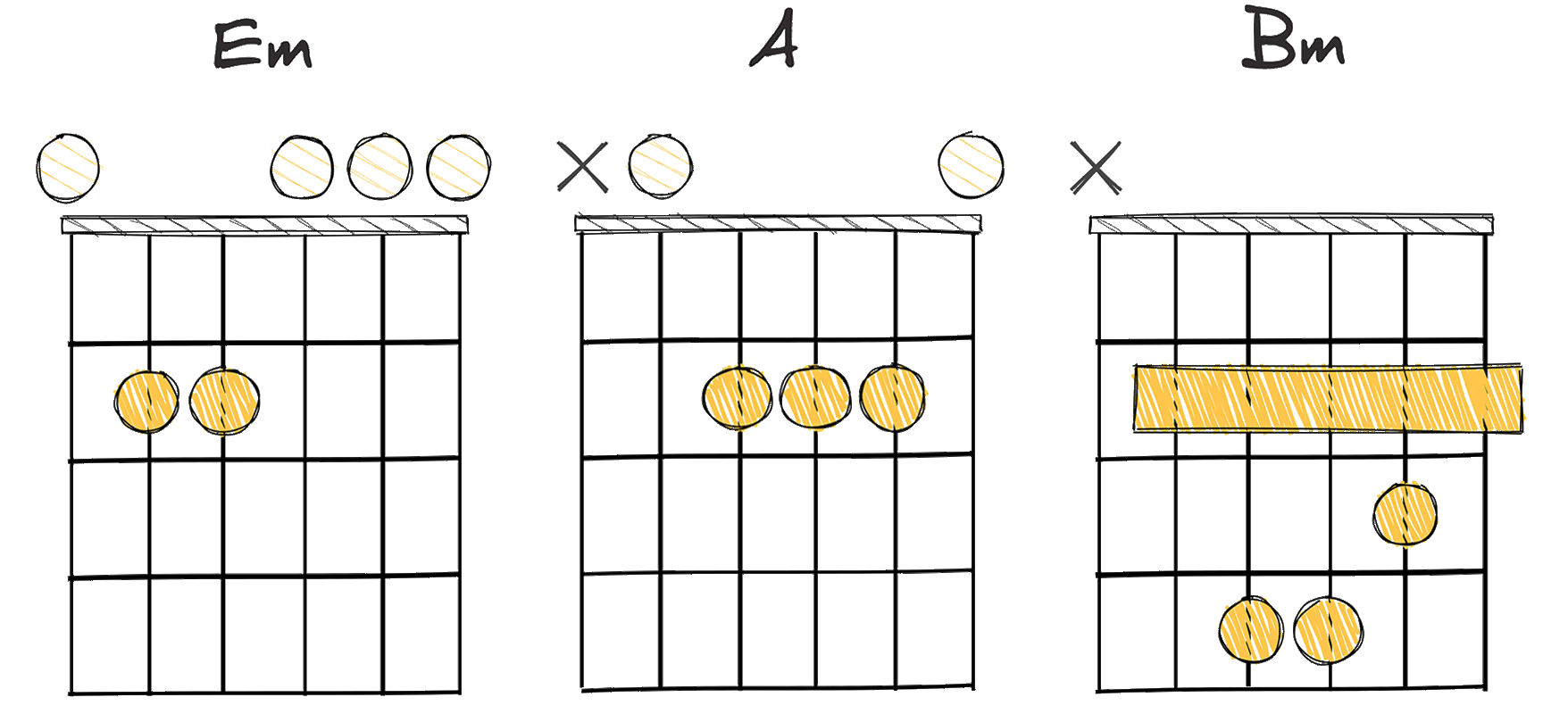
Within the diverse range of musical chord progressions, one that irresistibly evokes a hue of nostalgia is the ii-V-vi progression, denoted as 2-5-6 in numerical format.
The ii-V-vi progression opens up a palette of emotive expressions, especially when cleverly implemented in a piece of music.
Considered Intermediate for music learners, this progression takes a bit of practice to master, but its usage rewards with depth and sophistication in melody crafting.
Originated from the concept of temporary tonicization, ii-V-vi progression has marked its distinct presence in several musical genres over the centuries.
From classical to contemporary, this progression has functioned as a stepping stone in composing mellifluous tunes.
The 2-5-6 progression’s beauty lies in its ability to encapsulate a wide range of feelings, from ambiguity to resolve, propelling an everlasting nostalgic impact.
As a musician, understanding the ii-V-vi progression expands the artistic vocabulary, enabling them to experiment with emotion-provoking harmonies.
Once you get the hang of executing these chords smoothly, various melodious avenues get opened for exploration, leading to compositions that can touch the depth of nostalgic emotions.
Thus, the ii-V-vi (2-5-6) chord progression, with its characteristic sound and historic musical significance, wouldn’t fail to stir anyone’s soul.
I-iii-IV-V (1-3-4-5)
A heartwarming journey from resolution to tension, filled with nostalgia.
This I-iii-IV-V chord progression is known for its warm, nostalgic vibe that can conjure up a sense of sentimentality and reflection. The shift from the key’s tonal root (I) to the minor iii chord introduces a poignant touch, and the move to the major IV and V chords invites a hopeful resolution, making this progression a timeless favorite in evocative songwriting.
- Difficulty: Intermediate
- Example: G – Bm – C – D (Key of G major)
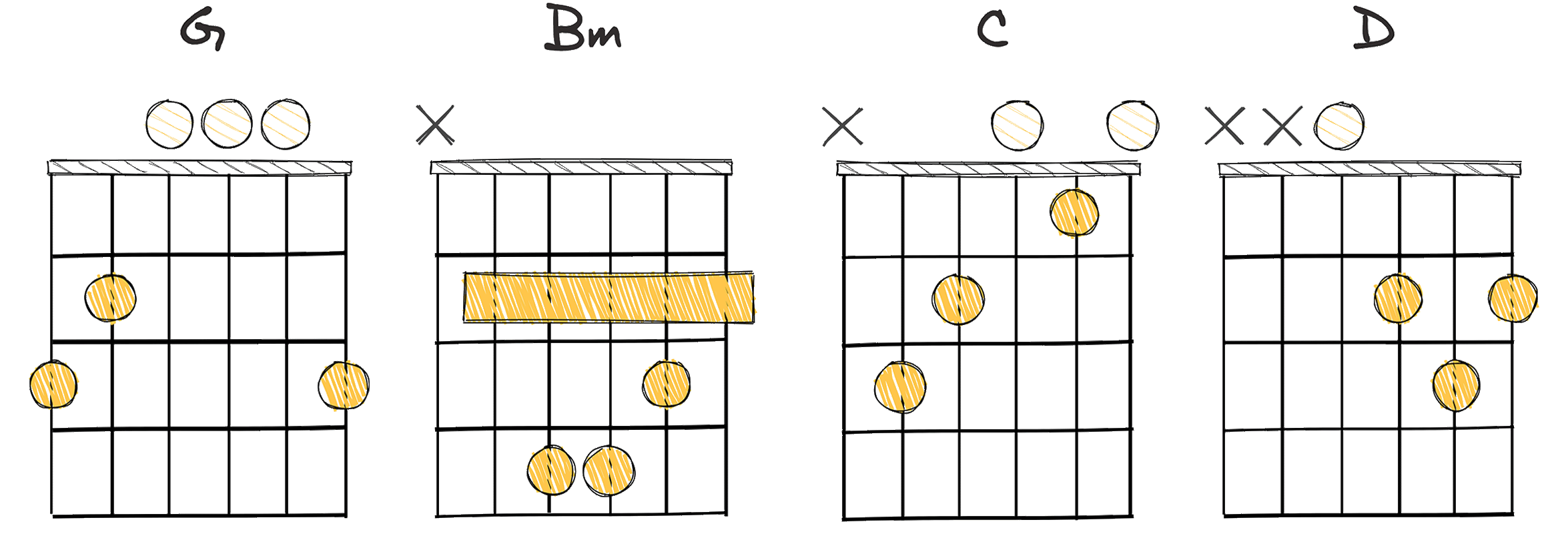
One of the most soul-stirring and nostalgic chord progressions in the realm of music theory is the I-iii-IV-V, also known as the 1-3-4-5.
This unique sequence, with its roots in classical music, has found its way into modern pop, rock, and jazz, becoming a beloved staple for both musicians and listeners alike.
An intermediate-level progression, the I-iii-IV-V requires a somewhat deeper understanding of harmony and chord relationships, but offers a deep and satisfying payoff for the effort invested.
The 1-3-4-5 progression is such that it begins with a warm, major chord (I), moves into a minor chord (iii) that adds a touch of melancholy, then lifts the mood with another major chord (IV), and finally resolves the musical phrase with a perfect cadence (V).
This unique blend of major and minor chords allows for a rich exploration of a wide spectrum of emotions, making the I-iii-IV-V a versatile tool in a songwriter’s toolbox.
In fact, this progression’s potential for evoking nostalgia is so potent, it’s often used in film scores and theme songs to complement the depicted emotions.
Moreover, the harmonious progression can also add a touch of complexity and elegance to even the most straightforward melodies, making them both memorable and deeply moving.
The I-iii-IV-V progression possesses a timelessness that transcends musical trends, contributing to its enduring place in music history and enticing future generations of musicians to explore its depths.
IV-V-I (4-5-1)
The classic, soul-stirring progression resonates with pure, timeless emotion.
The IV-V-I is a classic chord progression that wraps up phrases and entire pieces with an undeniable sense of resolve and completion. Harking back to the roots of Western music, its nostalgic appeal lies in its ability to evoke a profound emotional response, making it the perfect choice for sentimental compositions.
- Difficulty: Easy
- Example: F – G – C (Key of C major)
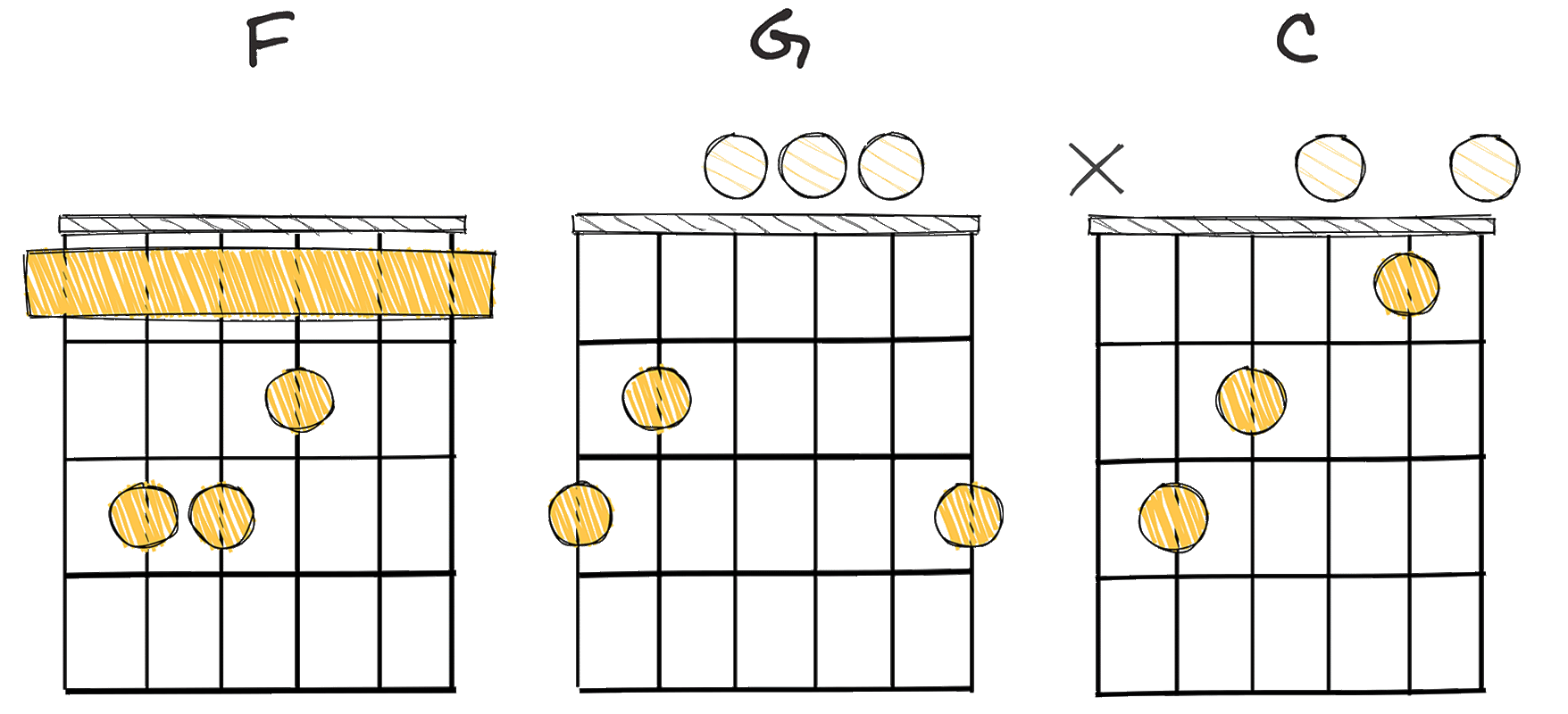
The chord progression of IV-V-I, commonly referred to as the 4-5-1, represents an essential part of the musical landscape that has strongly influenced many nostalgic tunes over the years.
Delving into the history, this progression finds its roots deeply embedded in classical music, having been used by composers for centuries to create a sense of resolution and finality in their pieces.
Owing to its straightforward nature, it has been adopted by a wide array of genres, from blues and jazz to rock and pop music – making it a universal musical phrase.
Especially for beginners, the progression is pretty easy to learn and play, since it only involves primary chords, allowing the player to quickly capture an evocative mood with minimal complexity.
On a related note, the IV-V-I also serves as a sturdy base upon which more complex compositions can be built – it’s adaptable and can be manipulated to suit different moods and musical styles.
The key of the progression, in this case, C major, also lends itself to a bright, positive sound, adding to its nostalgic effect.
From this perspective, it becomes clear that the simplicity of the IV-V-I isn’t a limitation, but rather a powerful tool that musicians can creatively harness to stir emotions and tell captivating stories.
I-V-ii-IV (1-5-2-4)
A timeless progression, evoking a profound sense of longing and reminiscence.
This chord progression, which moves from the tonal center to the dominant, and then to a minor supertonic before ending at the subdominant, is often used to evoke strong feelings of nostalgia in listeners. The shift from the I major chord to the V major creates tension that is later resolved beautifully through the ii minor chord and the IV major chord, thus creating a sense of familiarity and sentimentality.
- Difficulty: Easy
- Example: G – D – Am – C (Key of G major)
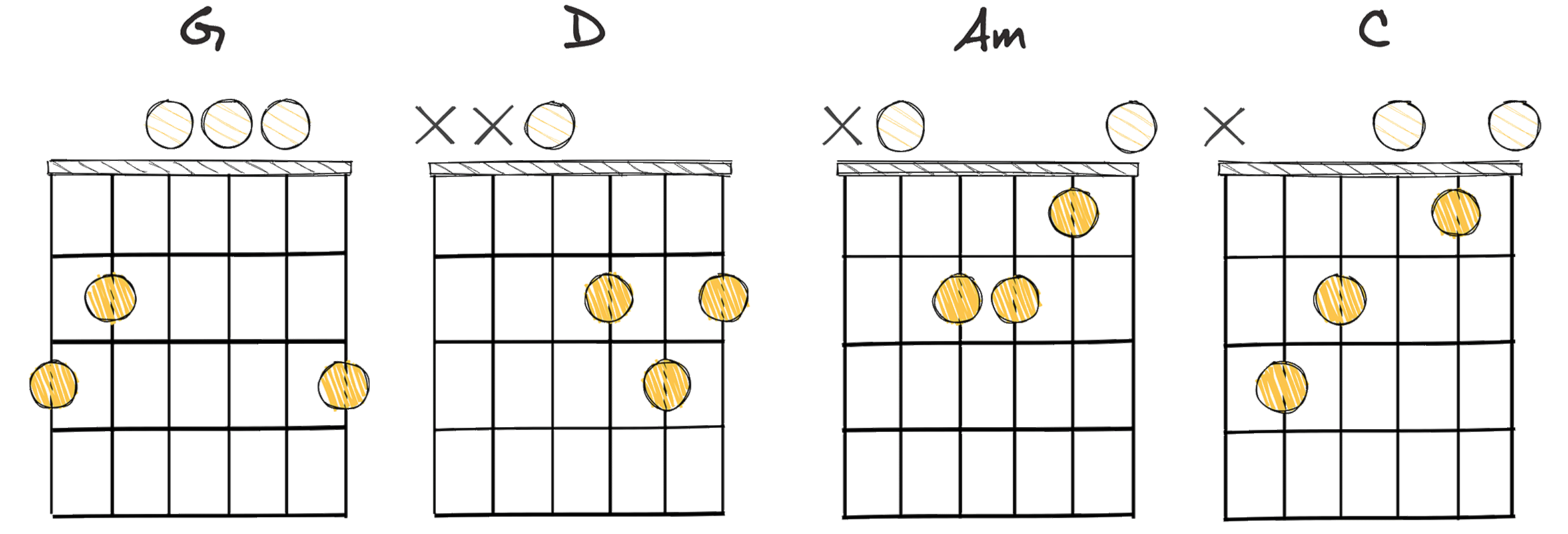
The nostalgic chord progression that we’re going to discuss now is I-V-ii-IV (1-5-2-4).
This progression is a staple in many genres of music, making it a crucial understanding for many musicians.
The history of this progression is vast and rich.
The 1-5-2-4 chord progression has been used in music for centuries, with examples dating back to classical compositions in the Baroque era.
The formula I-V-ii-IV is typically associated with a bright, uplifting and nostalgic sound.
Therefore, it has found a considerable place in pop music, being responsible for a significant part of the songs that bring us that comforting feeling of nostalgia.
This progression is easy to play, adding to its appeal for songwriters and musicians.
Being formed by primary chords, it does not require complicated fingerings, making it accessible to beginners, yet holding depth and complexity that attract experienced musicians.
Each chord in this sequence has a specific role.
The I chord, or the tonic chord, sets the tonality and gives us the feeling of ‘home’.
The V chord is known as the dominant and creates tension that needs to be resolved, whereas the ii chord, the subdominant, serves as a bridge between the dominant and tonic chords.
Finally, the IV chord gives us a sense of finality when it resolves back to the tonic.
Being easy to play yet holding a potential for creating profound musical experiences, this progression has been and continues to be cherished by musicians of all levels – from beginners who are just starting their musical journey, to proficient, professional musicians writing world-famous songs.
I-IV-V-IV (1-4-5-4)
Classic chords sequence evoking uplifting, retrospective emotions.
The I-IV-V-IV chord progression, particularly prominent in genres like rock and pop, elicits a profound sense of nostalgia due to its timeless, classic roots. Its simple structure paves the way for emotional resonance, taking listeners on a journey back in time and stirring the soul with its familiar and comforting sound.
- Difficulty: Easy
- Example: G – C – D – C (Key of G major)
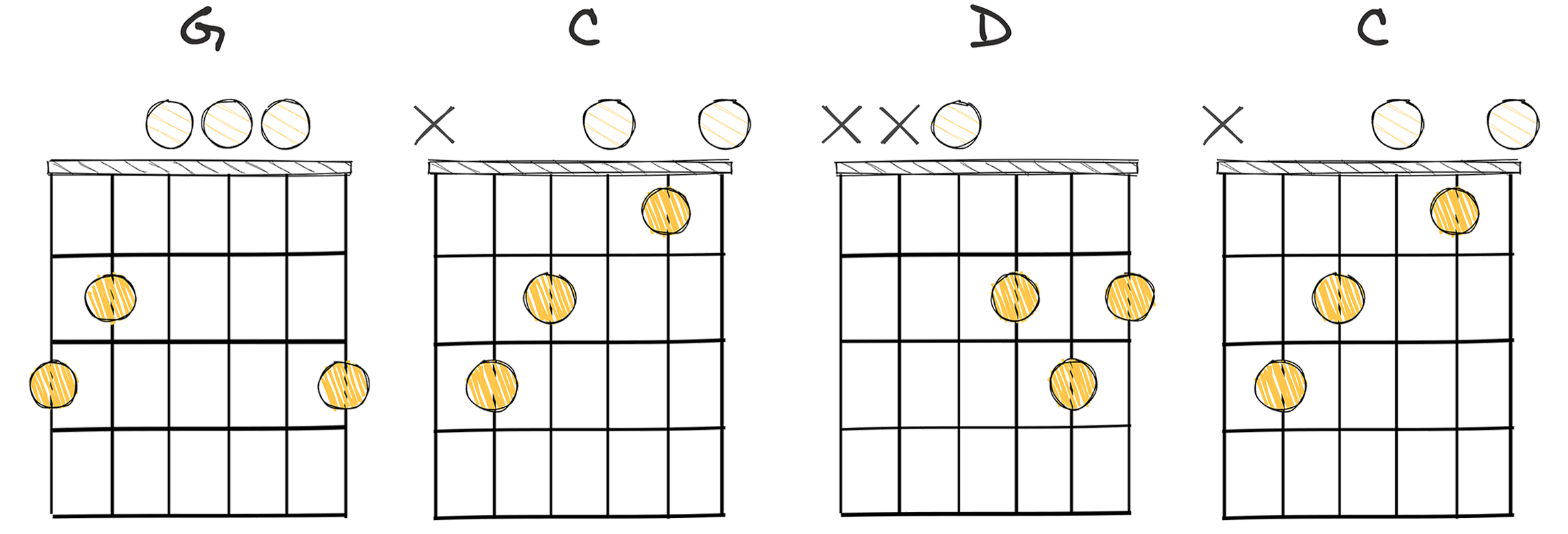
The I-IV-V-IV chord progression (represented by 1-4-5-4 in numeral harmony) is a timeless sequence steeped in nostalgic undertones.
The prevalence of this progression throughout musical history and its huge relevance in modern popular music testifies to its emotion-stirring potential.
From the blues to pop, the easy to play I-IV-V-IV progression has continually served as a popular backbone to many unforgettable melodies.
These four chords, often in root position, create a sense of home space that listeners find comfortingly familiar, and thus, nostalgic.
Indeed, while the chords I, IV, and V represent the key-identifying pillars in Western music, it’s the repetition of the fourth chord, IV, that adds a pleasant and unexpected twist.
What’s more, this chord progression is often followed by a return to the root chord (I), thereby further enhancing the feeling of homecoming.
This cyclical loop sends the music back to the first chord, creating a mood of rest, warming the heart of the listener with familiar, soul-stirring waves.
Another defining feature of this progression that evokes nostalgia is the simple, yet compelling harmonic rhythm it creates.
Utilizing this progression, songwriters have been able to compose tunes that stay in the listener’s memory long after the last note is struck.
This nostalgic chord progression sits at the heart of so many cherished songs, providing depth and warmth to our listening experience – truly stirring our souls.
vi-IV-I-vi (6-4-1-6)
A soul-stirring progression, evoking emotions of sweet reminiscence.
This versatile vi-IV-I-vi chord progression frequently offers a sense of nostalgia and emotional depth in music. It transitions from a minor chord to a major chord, resulting in a profound change in mood that tugs at the heartstrings and evokes strong sentimental feelings.
- Difficulty: Easy
- Example: C#m – A – E – C#m (Key of E major)
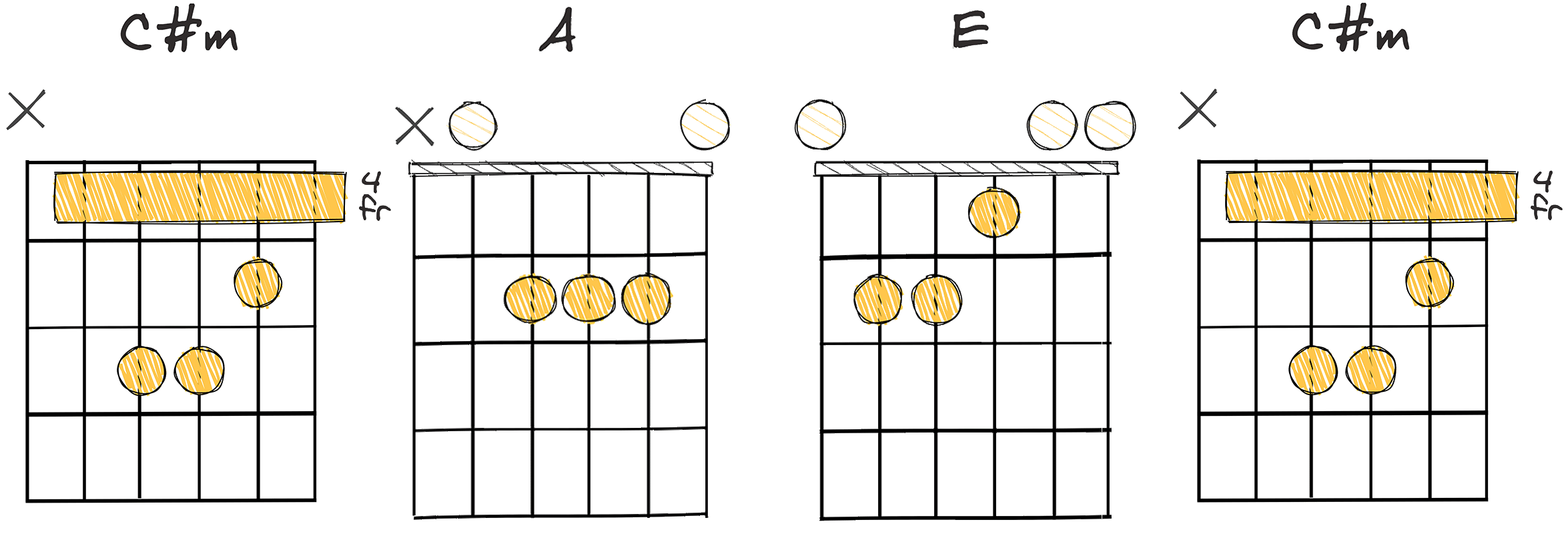
The vi-IV-I-vi (6-4-1-6) chord progression might not seem familiar at first glance, but chances are you’ve heard it in countless songs.
This progression is aptly named due to the combination of chords it uses.
When played in a major key, it invokes a sense of nostalgia that can stir the soul and awaken a variety of emotions within the listener.
It has been used in music for decades, finding a place in genres as diverse as pop, rock, and blues.
The progression is made up of the submediant (vi), the subdominant (IV), the tonic (I), and the minor submediant (vi).
The ease of playing the vi-IV-I-vi progression has made it a favorite amongst many musicians, particularly beginners.
Given that it only requires a knowledge of major and minor chords, it is a relatively easy progression to get to grips with.
In addition, using just four chords, it allows for a lot of creative freedom and variation in the melody and structure of a song.
These traits make it an excellent choice for students starting out on their musical journey or anyone looking to compose soul-stirring, nostalgic music.
This exact progression is used in various songs across different genres, showcasing its versatility and broad appeal.
Despite the simplicity of this progression, it has the power to create profound and moving pieces of music that can resonate with listeners on a deep emotional level.
This ability to connect with the audience, coupled with its ease of play and versatility, makes the vi-IV-I-VI chord progression a key element in writing nostalgic, soul-stirring music.
The Bottom Line
To encapsulate the essential information, these fifteen chord progressions serve as foundational pillars in the realm of music composition.
Regardless of genre, they provide a harmonious structure and a pleasing sound to the listeners’ ears.
Their consistency and ubiquity in music inform the way we understand, interpret, and appreciate music.
Whether one is a seasoned music maker or a burgeoning songwriter, understanding these chord progressions is imperative to create music that resonates with audiences.
It’s important for music artists to not only familiarize but also experiment with these progressions to evolve their musical style and creativity, thereby creating their unique soundscapes in the vast sea of music.
In love with guitars, and gear; expert in all things music! Been writing about guitars for about 5 years and counting. Born in the ’90s. Alma Mater: University of Havana. Always curious, trying to understand the world. #TeamFender




